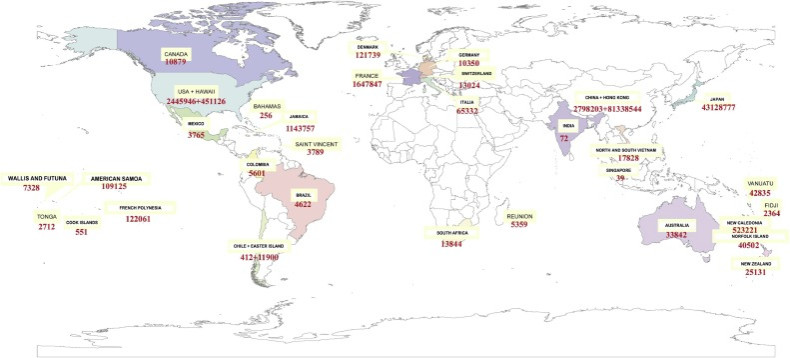- Home Page
- About Us
- GOLD JEWELRY
- SILVER JEWELRY
- PEARL
- GEMSTONE
- A. GEMSTONE OF INORGANIC ORIGIN
- 1. ACTINOLITE
- 2. AMBLYGONITE
- 3. ANDALUSITE
- 4. APATITE
- 5. AXINITE
- 6. AZURITE
- 7. BENITOITE
- 8. BERYL
- 9. BERYLLONITE
- 10. TURQUOISE
- 11. BRAZILIANITE
- 12. CALCITE
- 13. CHALCEDONY
- 14. CASSITERITE
- 15. CHRYSOBERYL
- 16. CHRYSOCOLLA
- 17. CORDIERITE ( hoặc IOLITE hoặc DICHROITE)
- 18. CORUNDUM
- 19. DANBURITE
- 20. ĐÁ MẶT TRĂNG (MOONSTONE)
- 21. DIOPSIDE
- 22. DIOPTASE
- 23. DUMORTIERITE
- 24. ENSTATITE
- 25. EPIDOTE (HAIR COLOR: YELLOW, BROWN, GREEN, WHITE)
- 26. EUCLASE
- 27. FELOSPAR (LIGHT INTERFERENCE)
- 28. FLUORITE
- 29. GRANAT (GARNET)
- 30. HEMATITE
- 31. HEMIMORPHITE
- 32. JADE (of JADEITE)
- 33. JADE (của NEPHRITE)
- 34. KIM CƯƠNG (DIAMOND)
- 35. KORNERUPINE (or PRISMATINE)
- 36. KYANITE (or DISTHENE)
- 37. LAPIS LAZULI (or LAZURITE)
- 38. LAZULITE
- 39. MALACHITE (PEACOCK FEATHER STONE)
- 40. NATURAL GLASSES (Meteorites and Elites)
- 41. OPAL (COLOR GAME)
- 42. PERIDOT (or CHRYSOLITE hoặc OLIVINE)
- 43. PETALITE
- 44. PHENAKITE (or PHENACITE)
- 45. PREHNITE (HAIR COLOR: YELLOW, BROWN, GREEN, WHITE)
- 46. PYRITE (GOLD STONE)
- 47. RHODOCHROSITE
- 48. RHODONITE
- 49. RUTILE (HAIR COLOR: RED, RED-BROWN, GOLDEN, BLACK)
- 50. SCAPOLITE (SHINY HAIR COLOR: PINK, YELLOW, BLUE, PURPLE)
- 51. SERPENTINE (CURVE, GREEN APPLE)
- 52. CERUSSITE
- 53. SCHEELITE
- 54. SINHALITE
- 55. SMITHSOLITE (ULM STONE)
- 56. SODALITE
- 57. SPHALERITE
- 58. SPHENE ( hoặc TITANITE)
- 59. SPINEL
- 60. SPODUMENE (INDUSTRIAL MSG)
- 61. STEATITE (hoặc SOAPSTONE: ĐÁ XÀ PHÒNG)
- 62. QUARTZ (QUARTZ)
- 63. TOPAZ
- 64. TOURMALINE
- 65. ULEXITE (IMAGE TRANSMISSION STONE)
- 66. VARISCITE (INTERNAL STONE)
- 67. VESUVIANITE (or IDOCRASE)
- 68. ZIRCON
- 69. ZOISITE ( WATERMELON STONES 🍉)
- Contacts
- Education
ANGKOR TREASURE90 Hùng Vương, P.Lộc Thọ, Nha Trang
PEARL
Pearl Informaion

History of the Pearl
Pearls are organic gemstones formed by shelled mollusks; mainly scallops, bivalve mussels. Pearls are made up of nacre (nacre) mainly aragonite (calcium carbonate) and conchiolin (the complex protein that forms the shell of a mollusk). Aragonite microcrystals accumulate around the irritant. The name "pearl" is believed to derive from the English "perle", which in turn derives from the Latin word "perna", meaning "foot", which is attributed to the shape of the foot. ham of bivalve molluscs.
Natural pearls are extremely rare, extremely expensive, and often small. Therefore, people have developed ways to culture pearls so that more people can enjoy these beautiful gems. In cultured pearls, some tissue or mother-of-pearl seeds are inserted into the shell of the mollusk. If successful, the process would cause the animal to form a "pocket of pearls" whose cells secrete a layer of a brown protein called conchiolin on top of the stimulant. This is followed by the secretion of multiple layers of the mineral nacre consisting of calcium carbonate in thin overlapping plates. Pearls can come from freshwater or marine mollusks. The beauty of pearls is that they can be removed from the shell with their natural beauty, complete shape and perfect shine without the need for cutting or polishing.
The oldest recorded reference to a pearl in history is the 7,500-year-old "Umm Al Quwain Pearl", found in a tomb in what is now known as the United Arab Emirates. United Arab Emirates. Before pearls were cultured by humans, they were harvested from the Persian Gulf, Sri Lankan waters, freshwater sources in China, and rivers in Europe. Later, Christopher Columbus discovered pearls in South America. When these natural pearls were almost exhausted in the early 20th century, the Chinese and Japanese started cultivating pearls and the rest is history. Today, pearls are still a precious jewel and are cultivated around the world.
Identification of the Pearl
Pearls can be identified by their pearlescent luster, and when lightly rubbed against the teeth, a slightly rough surface texture can be detected, while imitation pearls have a smooth feel. The surface appearance of natural and cultured pearls is the same, but the density of cultured pearls is usually higher, mostly around 2.73. The only way to distinguish between natural and cultured pearls is to examine their internal structure. Experts use an endoscope to do this through the drilled holes of the pearl. Natural pearls have concentric inner layers.
Pearl culture area
Pearls are found and cultured in seas around the world. Natural sea pearls are found in Australia, Japan, Central America, the Persian Gulf, the Gulf of Manaar (between India and Sri Lanka), the coast of Madagascar, Burma (Myanmar), the Philippines, the South Pacific Islands (including Tahiti and Fiji) and South America.
Natural river pearls are found in Asia, Europe and North America.
Sources of cultured seawater pearls include Southeast Asia (such as Indonesia and the Philippines), Australia, China, French Polynesia, Japan, the South Pacific Islands (including Tahiti and Fiji), and the Philippines.
Sources of cultured freshwater pearls include China and Japan.

Method of identifying Pearls







